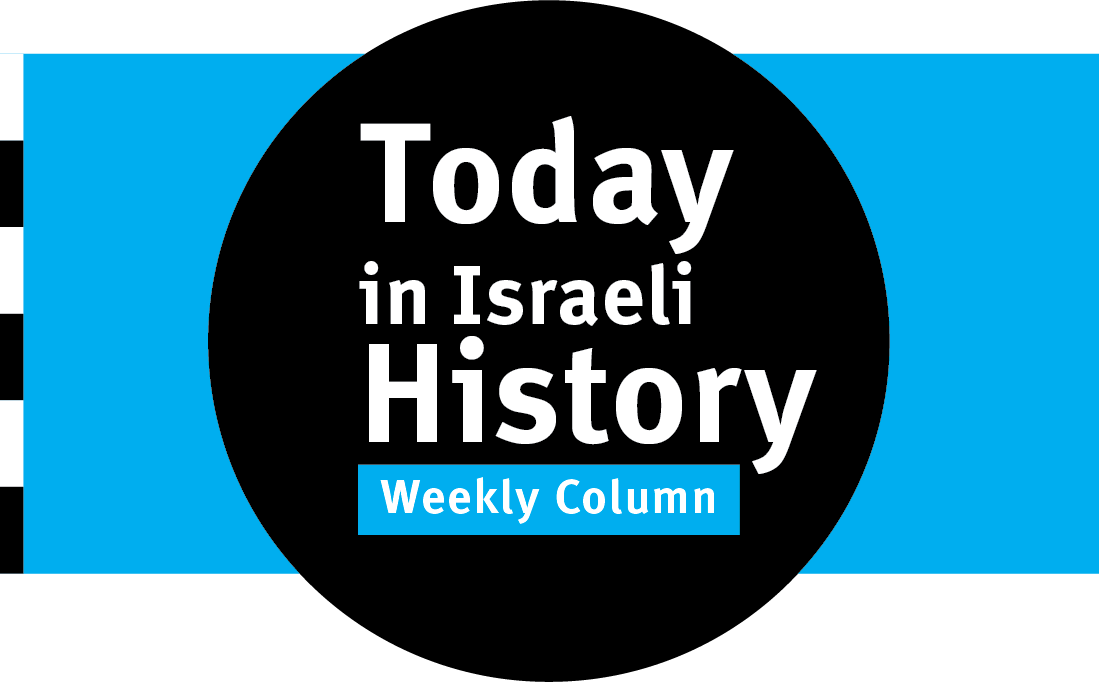Jan. 5, 1996 — Phone Bomb Kills Terrorist Yahya Ayyash

Hamas bomb maker Yahya Ayyash is killed in Gaza City when his cellphone explodes during his weekly call to his father in the West Bank. The Shin Bet, Israel’s internal security service, intercepts the call and confirms Ayyash’s identity before detonating the explosives planted in his phone. Nicknamed “The Engineer,” Ayyash created bombs that killed more than 80 Israelis and maimed 400 others after he joined a wing of Hamas in 1992.
Jan. 6, 1942 — Toledano Is Installed as Chief Rabbi

Rabbi Jacob Moshe Toledano, the chief rabbi of Alexandria, Egypt, returns to the Land of Israel to assume the post of the Sephardi chief rabbi of Tel Aviv and Jaffa. Born in Tiberias in 1880, Toledano comes from a long line of rabbis and traces his family back to Toledo, Spain. His experience includes three years as the chief rabbi of Tangiers, Morocco, in the late 1920s. He served as Israel’s minister of religious affairs from 1958 to 1960.
Jan. 7, 2010 — Early Hebrew Inscription Is Deciphered

University of Haifa professor Gershon Galil announces that he has deciphered an inscription found at Khirbet Qeiyafa in 2008 on a pottery shard from the 10th century B.C.E. Written in ink in a proto-Canaanite script, the inscription is the earliest-known Hebrew writing yet discovered. The text calls for the protection of slaves, widows and orphans, the rehabilitation of the poor, and the support of strangers.
Jan. 8, 1978 — Hadassah Leader Rose Halprin Dies

Rose Luria Halprin, a two-time national president of Hadassah who held numerous leadership positions in the Jewish Agency during the British Mandate, dies in New York at age 83. A New York native, she led Hadassah from 1932 to 1934 and from 1947 to 1952 and served as a liaison to the Hadassah Medical Organization while living in Jerusalem during the construction of the Mount Scopus hospital in the late 1930s.
Jan. 9, 1873 — National Poet Hayim Bialik Is Born

Hayim Nahman Bialik, Israel’s national poet, is born in Radi in northwestern Ukraine. Studying at a yeshiva in Lithuania, he falls under the influence of the writing of Ahad Ha’am and his call for cultural Zionism. After going to Kishinev to cover the aftermath of the 1903 pogrom, he writes the poem “In the City of Slaughter.” He makes aliyah in 1924 and plays an important part in the cultural development of Tel Aviv.
Jan. 10, 2000 — Syria Peace Talks End

Israeli Prime Minister Ehud Barak, U.S. President Bill Clinton and Syrian Foreign Minister Farouk al-Shara talk during a walk in Shepherdstown, West Virginia, on Jan. 3, 2000.
Seven days of peace talks between Israeli Prime Minister Ehud Barak and Syrian Foreign Minister Farouk al-Shara, focusing on trading all or part of the Golan Heights for peace, conclude without any resolution in Shepherdstown, West Virginia. Israeli Foreign Minister David Levy says the talks, facilitated by U.S. President Bill Clinton, never come close to resolving any issues. The negotiations are supposed to resume Jan. 19 but never restart.
Jan. 11, 1961 — Immigrant Ship Egoz Sinks

The Egoz, a ship leased by the Mossad to secretly transport Moroccan Jews to Israel, sinks around 3 a.m., a few hours after leaving the Moroccan port of Al Hoceima on its 12th immigration trip. Forty-four immigrants, half of them children, drown. The tragedy leads Morocco to ease its ban on Jewish emigration in exchange for a payment for each person who leaves, and some 80,000 Moroccan Jews depart Morocco from 1961 to 1964.
Items are provided by the Center for Israel Education (israeled.org), where you can find more details.


